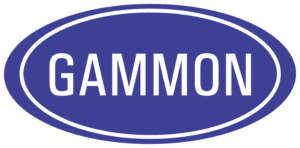Frequently Asked Questions
They will last indefinitely unless physically damaged.
As long as the piston falls within the zero range on the scale when at rest, you do not need to calibrate the Gammon Gauge.
There is no o-ring on the threaded housing. Fuel should only travel through the plastic monitor, not around it. If you are re-using the plastic monitors, try using a new one. The leak may be due to a worn-out plastic monitor. If not, then replace the 2 o-rings INSIDE the housing. GTP-2200-06V on top. GTP-2200-12V on the bottom. This does not apply to the GTP-3318 high pressure monitor holder, which is rarely used except on high pressure pipeline use. It is all stainless, not gold like our standard MiniMonitor “Millipore”-type tester.
Send the remaining standard to us for evaluation. We may be able to make a new match for it. If we cannot, then you will have to buy a new set, GTP-835.
If the piston will move freely in the glass cylinder when removed from the gauge, the spring must be replaced.
If the Viper or Scorpion is for anti-icing additive: NO! The neoprene seals work great with anti-icing additive but are not compatible with fuel. Pumps for other additives would be OK, but it is preferable to test with the additive the pump is intended for. There is no rubber compatible with both jet fuel and pure DiEGME anti-icing additive – a.k.a. “Prist” or FSII. We do provide replacement seals at a small charge.
You can buy a new set, GTP-835.
Disassemble the gauge. Clean the glass with a Scotch brite pad. Do not use anything else. Reassemble the gauge. If the piston still will not move freely in the glass cylinder when removed from the gauge, you can either return the gauge to us or replace the glass and piston. Never send in a gauge that has fuel in it!
GTP cannot advise whether or not to use fuel. If it is different than what you are used to seeing, you must investigate further. Contact the fuel supplier and ask them if their fuel has changed. Compare your results with their test results. If the fuel you received is different from what they sent to you, isolate the fuel and do not use it until it is cleared by your supplier as safe. A common cause of contamination is accidental mixing of fuels at the terminal or in the delivery truck or pipeline.
As long as the seal on the barrier bag is not broken, they should last indefinitely. However, if a pad has turned yellow, then it has spoiled and is no longer fit for use.
You can either return the gauge to us or replace the glass and piston. Never send in a gauge that has fuel in it!
GTP-8884 is a bleeder valve to help the centrifugal pump prime. Air, then fuel, will be released until pump pressure builds up.
Call us, and we will advise you as to whether or not you need to return the unit to us.
Please refer to the document “Adjusting GTP-8980 Differential Pressure Set Point.”
Our instruction manual explains that you must calibrate it every time you use it.
Probably not. Test the spring with the 3-way valve. If the piston deflects to 30PSID with flow and returns to zero when the test valve is released and pump is off, the Gammon Gauge is working. Check filter elements and check the fuel for dirt, water, or icing. You do not need to send the Gammon Gauge out for calibration. See the calibration certificate.
Our factory repair program insures your satisfaction because we let you know the cost before we start any work. If the customer decides that the repair cost is excessive in comparison to purchasing a new item, we will return your damaged or inoperative item at our expense.
You must change the scale and the spring inside the piston. This is a good time to replace the O rings and the filter as well. Clean the glass tube inside and the piston outside with Scotchbrite, and/or cotton cloth.
Call us on the telephone at 732-223-4600 to request an RFR (returned for repair) number which must appear on the outside of the package you ship to us. The person who gives you the RFR number will ask for the following information:
- Product name, part numbers, quantities and serial numbers, if available.
- Name and address of your company or military base.
- Your name, telephone number, fax number, and/or e-mail address.
Carefully pack the product being sure that individual items are well separated. A heavy item should be in a separate box. CAUTION: Residual fuel must be drained from every item before it is packed for shipment. If an Aqua-Glo instrument is to be returned, be sure to include the calibrating standard, if available. We strongly urge that you make shipment in the original carrying case for safety in transport. If any items in your kit have been lost, be sure to tell us so that we can quote the price of replacements.
Ship the package to us at the address at the top of the page with the RFR number on the shipping label.
We will notify you by telephone of the repair cost, usually within one day after we receive the product. If you require a written itemization and price quotation, give us exact instructions for addressing our message.
If you are a U.S. Government operation, be prepared to give us an IMPAC card number and expiration date. Alternatively, you may also pay on a net 30 basis if we receive a hard copy of a form DD-1155. Return freight cost will be added at the time of shipment.
Commercial customers can order the repairs by purchase order or against a Visa, MasterCard or American Express credit card number. Return freight costs to your facility are your responsibility. We will prepay and add to the repair cost. Be sure to tell us the desired method of shipment. If the product is within our warrantee period, and the defect is not due to abuse, we will make repairs at our expense. In such case, we will pay the return shipping costs.
Our factory repair program insures your satisfaction because we let you know the cost before we start any work. If the customer decides that the repair cost is excessive in comparison to purchasing a new item, we will return your damaged or inoperative item at our expense.
Call us on the telephone at 732-223-4600 to request an RFR (returned for repair) number which must appear on the outside of the package you ship to us. The person who gives you the RFR number will ask for the following information:
- Product name, part numbers, quantities and serial numbers, if available.
- Name and address of your company or military base.
- Your name, telephone number, fax number, and/or e-mail address.
Carefully pack the product being sure that individual items are well separated. A heavy item should be in a separate box. CAUTION: Residual fuel must be drained from every item before it is packed for shipment. If an Aqua-Glo instrument is to be returned, be sure to include the calibrating standard, if available. We strongly urge that you make shipment in the original carrying case for safety in transport. If any items in your kit have been lost, be sure to tell us so that we can quote the price of replacements.
Ship the package to us at the address at the top of the page with the RFR number on the shipping label.
We will notify you by telephone of the repair cost, usually within one day after we receive the product. If you require a written itemization and price quotation, give us exact instructions for addressing our message.
If you are a U.S. Government operation, be prepared to give us an IMPAC card number and expiration date. Alternatively, you may also pay on a net 30 basis if we receive a hard copy of a form DD-1155. Return freight cost will be added at the time of shipment.
Commercial customers can order the repairs by purchase order or against a Visa, MasterCard or American Express credit card number. Return freight costs to your facility are your responsibility. We will prepay and add to the repair cost. Be sure to tell us the desired method of shipment. If the product is within our warrantee period, and the defect is not due to abuse, we will make repairs at our expense. In such case, we will pay the return shipping costs.
In testing the Gammon Gauge, there are sometimes problems. These are usually manifested in the piston not traveling to the bottom of the scale. This is rare since most systems have at least 40 psi at the filter inlet.
The common reasons for problems are:
- Some people test on compressed air or nitrogen. You cannot do this with a piston gauge, liquid must be used. We can advise on how to do this.
- In some systems, the system cannot generate more than 30 psi and they have a 30 psi gauge. In such a case, the gauge can be converted to a 0-15 psi gauge by replacing the spring and scale.
- In some cases, the system pressure gauge may read a higher pressure than is present on the gauge inlet.
- Restrictions in the vent line from the Gammon Gauge test valve.
To properly test travel on a Gammon Gauge, you need more than 30 psi on the inlet. One reason is that the test valve doesn’t completely shut off the downstream pressure. Some pressure from the outlet sense line still gets through to the underside of the piston. Another reason is if the vent line is long and/or goes into a tank or port that has some small amount of pressure in it. For example, if the vent goes to the slop tank and it can hold a little pressure due to its pressure operated vent. An additional reason is if the vent line goes through a check valve (they always take a little pressure to open).
The easy way to detect such an issue is to disconnect the vent line from the relief valve on the Gammon Gauge tester.
There is one other possibility, that the pushbutton valve poppet has been distorted. We have seen this a couple of times, where the button was accidentally hit or pushed VERY, VERY hard. You can’t do this by simply pushing it, even if you try. But if you know you have 40 psi and you know the vent line is wide open and you still have this problem, replace the vent valve.

